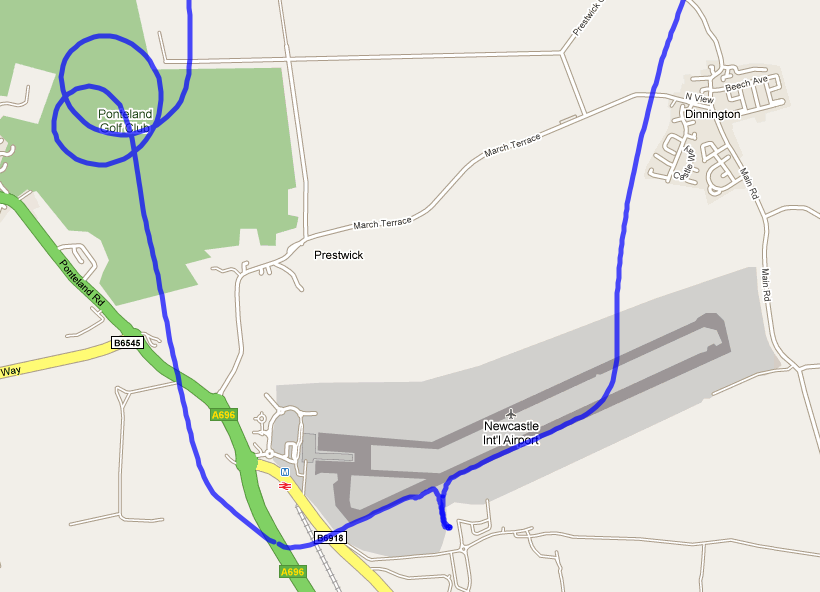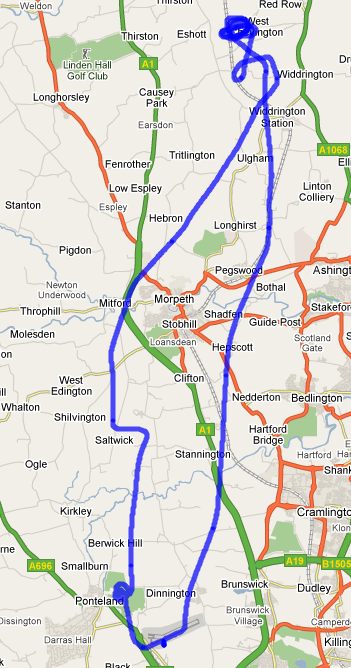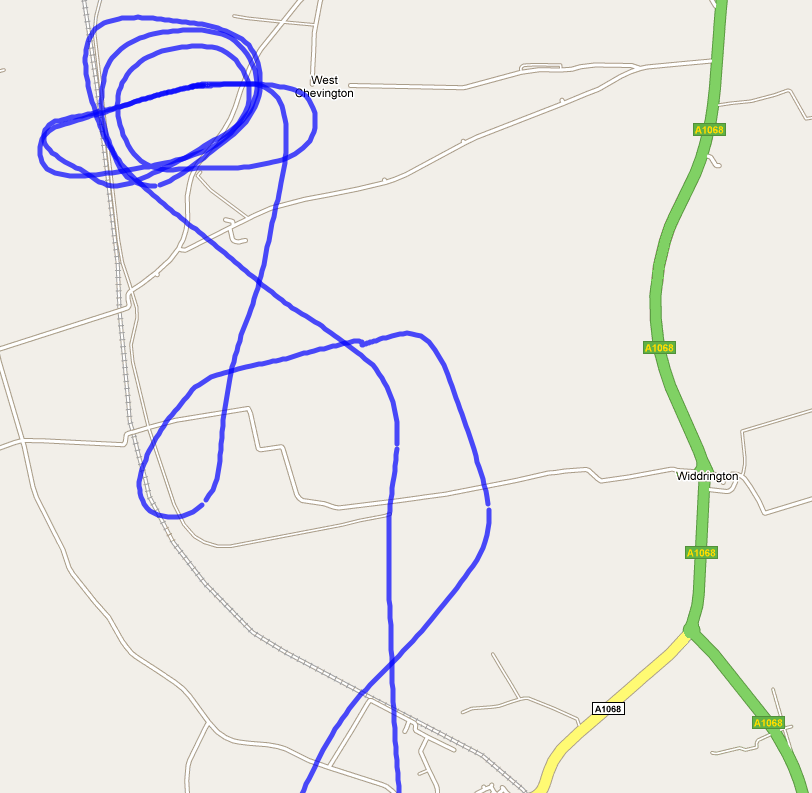Another great lesson today.
We started with a discussion about what to do. It was clear I need to get my solo hours up as I’ve only got about 2.25. The prospect of going to X and back without landing didn’t really appeal to me, so I suggested a trip to Carlisle and back to land away and Steve said that was ok. Sadly, the weather precluded the trip, but it’s an exciting thought for the future ![]()
Instead we did some more instrument work (I need to get instrument hours up too) and some confined area landings which made out for an excellent and fun lesson.
Steve came out with me today to see how I was checking her over. That was good because it was some reassurance that I was doing 90% correct, but also reaffirmed and refreshed some of the names of helicopter parts and their function and things to check. I was quite surprised to find out that this isn’t tested in the General Flying Test (GFT). But, I expect it’ll be needed for the commercial test, so all is not lost and this is essential stuff anyway.
We started her up and we’re off to Foxtrot to hold for a 07 departure. Quite busy for departures so we held in the light aircraft warm-up area. Here I was presented with the choice of hover practice or putting her down. I felt the need for some landing practice, so whilst we waited, we did some landing/liftoff combos, probably about 3 or 4. I did a 10/10 one which always leaves me feeling warm inside, and a couple of 6/7′s. We were then asked to line up and wait.
No sooner had we “lined up” we were given the go and off we jolly well..….
Once at level flight, Steve had me don the instrument goggles so I could only see the instrument pedestal. He asked me to …..
- Hold a heading
- Climb 300 feet
- Descend 300 feet
- Turn 90′ to the left
- Turn 90′ to the right
- Do a 180′ descending turn
All on the way to the confined area.
It all went well.
Then we approached a different, more confined area than previously.
The wind was a Northerly wind, but the area was naturally west-east, which meant it was a bit of a challenge. The wind was also quite light about 5 knots, so given the direction that was probably a plus.
We did the powering back to 53knots level to find the available MAP. We had 6.5 in hand. This reminds me, before I forget, a joke from yesterday. We had the same amount of MAP available yesterday (6.5 inches).
Steve :- So, you have 6.5 inches in your hand, I mean “in hand”
LONG 5 SECOND PAUSE as dp is concentrating so hard.
The joke hits. Late laughter ensues !
Steve finds the time it took for the joke to work funny. I’m laughing at the joke etc etc…..We have a laugh for sure !
Anyway, back to today. After doing the S’s checks and with our 6.5 inches IN HAND, we were spoilt for choice for the approaches. We initially tried a west to east approach to make the most of a gap in the trees and the more lengthy runway-like shape of the confined area, but at the decision altitude, it didn’t feel right so I suggested going around. The wind was more northerly than forecast.
With the wind being so light, Steve suggested a southerly approach as there were less trees on the last few yards of the approach. This made it a downwind approach which always gets my heckles up, but Steve (as always) was bang on. The lack of trees (small shrubs instead) allowed us to get lower and use the confined area for more of a flare. It worked well.
So, once in the confined area in the hover, we did the “move to the right, turn right” routine and then taxi’ed to a point close to the edge of the area. We had enough power for a towering takeoff and Steve had me pick a 12pm, 3pm reference. Once I had them, we pulled 24.5 MAP and we shot up. Once clear of the trees, we transitioned away. It should look great on the video.
We did another orbit and approach and picked a different location in the confined area for the towering takeoff. For the second one, I started the transition a little early, but you live and learn.
We then headed back to EGNT. Steve did an “Engine Failure Engine Failure etc” on the way back. Did the “entering” fine, totally forgot the Mayday call which come to think of it, I forgot yesterday too. It was a 180′ auto, and the field I picked wasn’t as good as the one Steve had picked, so we changed to his one. It was a big field of newly harvested wheat awaiting the farmer to come round with his combine. Steve said to go to “powered termination” so we went right down to 5 feet or so. The flare went really well and the pop of the collective and subsequent recovery are a bit of a blur, but there was a lot of yawing, but we made it back into a hover. Still need lots of work on the powered termination and the Mayday call. But, I’ll get there. Steve looked back as we transitioned off and said we’d made a mess of all the nicely rowed hay and that the farmer wouldn’t be best pleased and we should give it some wellie. It made me laugh. We had made a big circle of hay. Hope it shows on the video.
We then headed back home.
I made the call to rejoin the Zone quite late (my bad), so we started doing an orbit as there was so much radio chatter going on, I couldn’t get a word in edge ways. But, half way through the orbit, we were cleared to join.
The trip back was uneventful. The landing was a 6/10.
Next lesson is Friday and I may be going solo to Carlisle (weather and machines permitting). Looking forward to the most expensive bacon buttie you can buy. That’s not because the cafe is expensive at Carlisle….It’s a poor helicopter costs joke.
While I remember, I’m already starting to put my training head on. When I used to be an IT trainer, I used to have to think of ways to get concepts across to students in an easy to visualize/remember way. Subconsciously, I’m already starting to think about how to get helicopter concepts across. I’m sharing this in case it will help others with a problem I had. Occasionally, we fly in the HP model of the R22. It lifts off and lands differently to the non-HP variant because of it’s more forward CoG. I was sharing this with Steve as it helped me get my head around the difference. To experience the difference, try the following…..
- Take your shoes off and put them together in front of you while you sit down, toes facing away.
- Grab both shoes with one hand in such a way that when you lift them gently and slowly off the floor, the toes of the shoes are the last thing to leave the floor.
- You now have your own R22 HP.
As you lift them off the floor each time, analyse the angle of the shoes. When the heels are 1 inch off the ground and the toes still touching, how would you get the shoes level again, what movement of your hand (cyclic stick) would be needed to get the (shoes) heli level.
Also, you can mirror the double landing of the R22 HP. Lower the shoes until the toes are touching, think about what movements are needed as you get the heels down, to stop the helicopter moving backwards. Hard to explain in a blog post, but have a play.
Here’s the video from yesterday’s confined area…….Today’s will be tomorrow.



